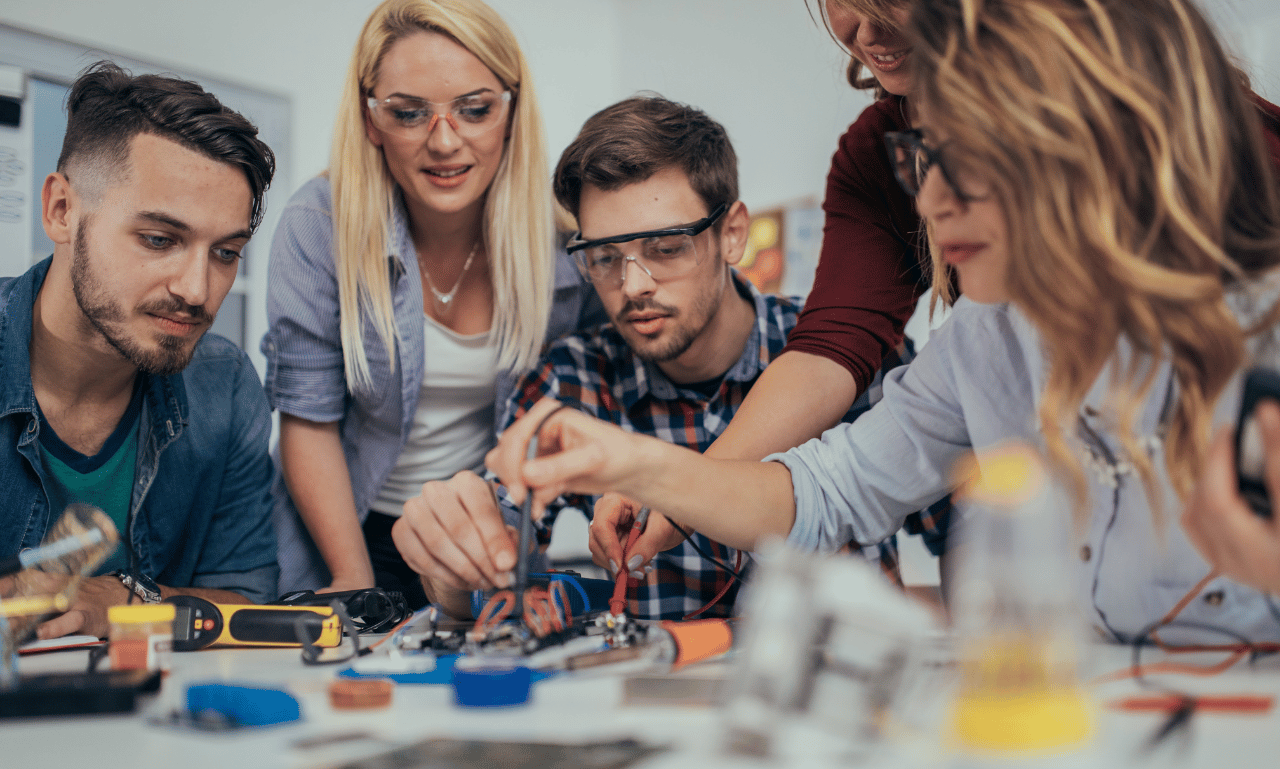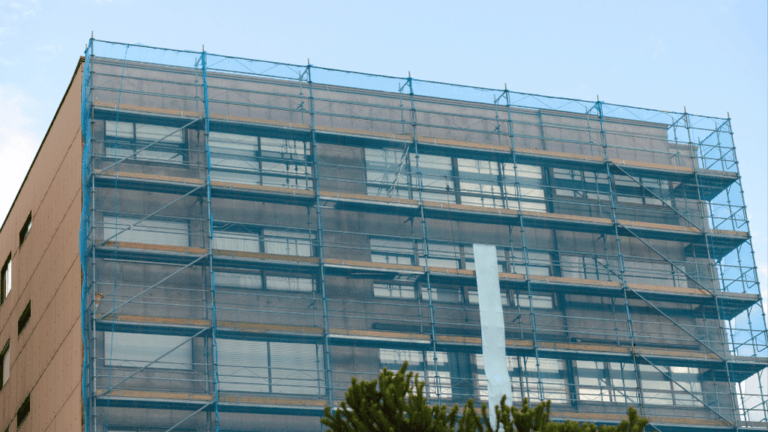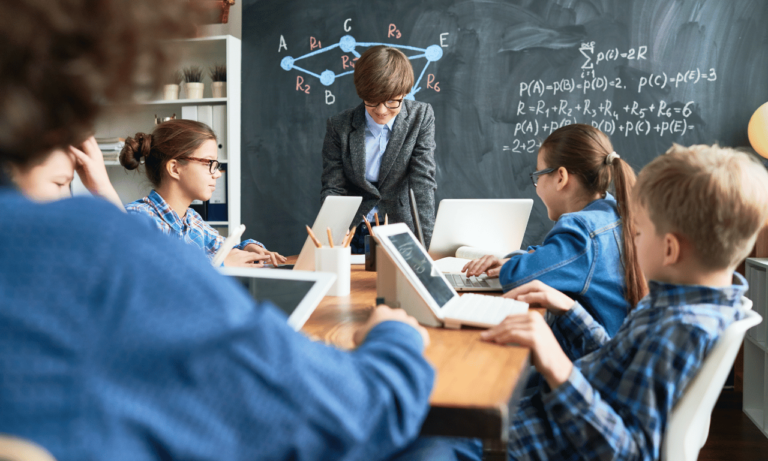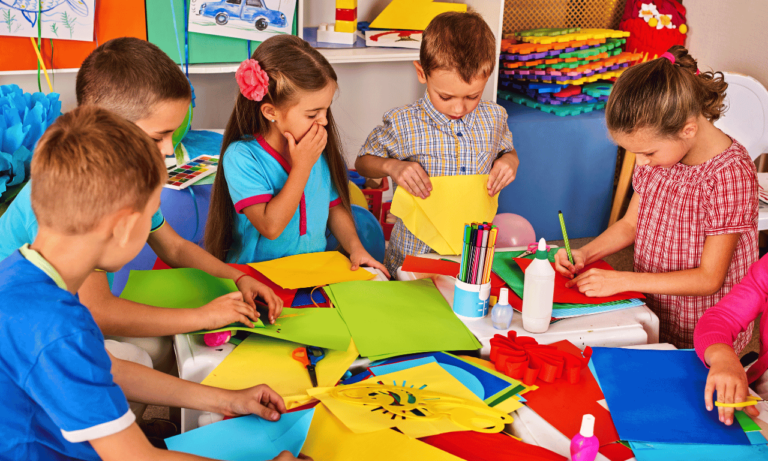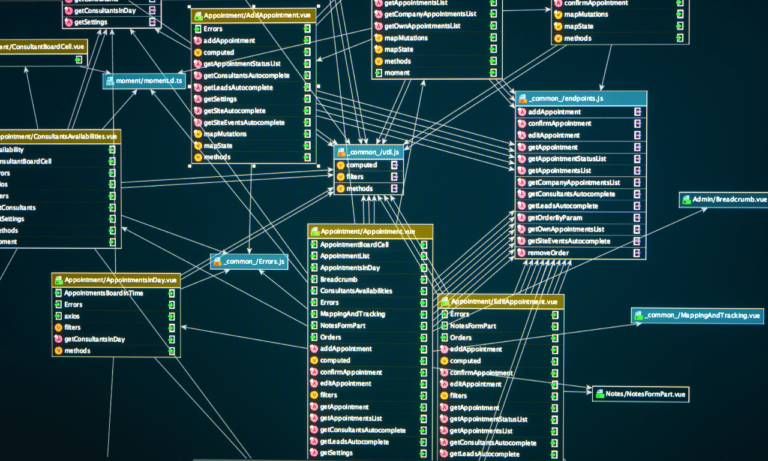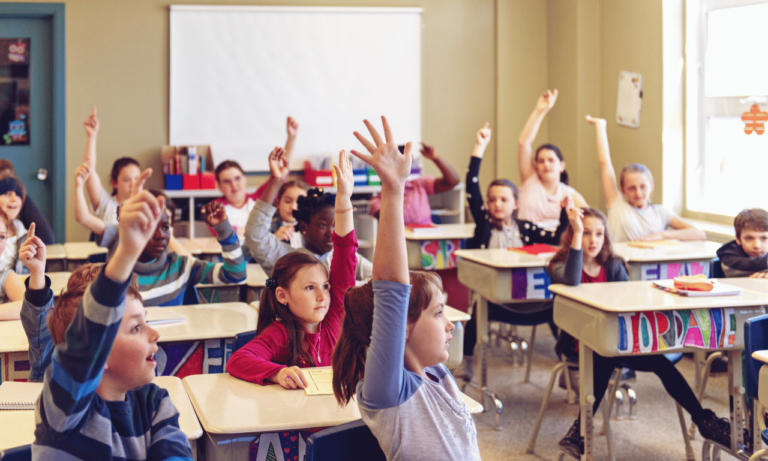Phone:
(+65)8319-0742
The educational landscape is continually evolving, and at its forefront is the project-based learning methodology, a dynamic approach to teaching that fosters real-world success through hands-on learning projects. Embracing this learner-centric framework, we witness students thriving as they develop collaborative skills and independent learning capabilities. Project-Based Learning Assistance guides students through complex challenges, pushing them towards autonomy and preparing them for the realities of the professional world. This innovative pedagogy encapsulates the essence of a progressive education system, where active participation and experiential learning become the conduits to academic and personal growth.
Key Takeaways
- Project-Based Learning methodology emphasizes real-world application of knowledge.
- Hands-on learning projects foster independent and experiential learning.
- Project-Based Learning Assistance nurtures critical collaborative skills for group success.
- Students learn to tackle complex issues, preparing for real-world success.
- PBL cultivates intrinsic motivation and engagement in learners.
Embracing Project-Based Learning: Why It Matters Now More Than Ever
The landscape of education has been irrevocably transformed by an engaging education model that prioritizes student project guidance and collaborative project help. This model, known as Project-Based Learning (PBL), serves as a cornerstone in developing 21st-century skills essential for students’ growth into capable, innovative members of the workforce. By incorporating socio-cultural learning strategies within its framework, PBL aligns with the nuanced educational demands of our time.
At the heart of PBL lies the desire for genuine workforce preparation. It accomplishes this by engaging students in real-world challenges that require a dynamic application of theory to practice. By doing so, PBL encourages a sense of ownership and deepens students’ commitment to their educational journey.
Through the lens of PBL, traditional classroom activities are re-envisioned as opportunities for meaningful team-based problem-solving. This not only sharpens analytical and innovative capacities but inherently fosters the vital competencies of communication and collaboration. Here are some of the reasons why implementing PBL reflects a proactive approach to education:
- Enhances problem-solving strategies through applied learning
- Builds collaboration and leadership skills within diverse teams
- Cultivates adaptability and innovation, preparing students for the unpredictability of modern job markets
- Improves engagement by connecting academic concepts to community and global contexts
- Supports socio-cultural development through immersive, culturally responsive projects
Embracing PBL is not merely optional in our rapidly evolving societyâit is critical. It equips young minds with the cultural competency and agility needed to navigate and contribute to a world where perennial learning is the norm. By integrating student project guidance into the curriculum, educators empower their students to become agile learners who are not only prepared for today’s challenges but are also adept at anticipating the needs of tomorrow’s world.
Project-Based Learning Assistance: Navigating the Methodology for Optimal Results

Progressing through the educational landscape requires adaptable strategies that encourage not only knowledge acquisition but also skill development and personal growth. This is where Project-Based Learning (PBL) shines, with a versatile framework that facilitates experiential learning through the lens of real-world problem solving. In this exploration, we will delve into the ways educators can use PBL to craft a transformative learning environment.
Understanding the Principles of Project-Based Learning
At its core, PBL redefines the role of students and teachers by intricately layering PBL principles into the learning process. It champions an inquiry-based learning approach where students inquire, engage, and create, carving out a deep-seated understanding of concepts and their applications. PBL’s principles pivot around the creation of a curriculum that empowers students to become investigators and innovators, taking charge of their learning journey.
Aligning Projects with Curricular Objectives
When it comes to ensuring the efficacy of PBL, curricular alignment plays a fundamental role. Projects designed with curricular goals in mind encourage a symbiotic relationship between academic rigor and practical savoir-faire. These projects become powerful conduits for imparting education that students can tether to textbook learning and practical scenarios alike.
Utilizing Assessment Tools to Elevate Student Success
Equipping learners with mechanisms to reflect upon their progress is critical in PBL. Through tailored assessment tools, educators can offer genuine feedback while nurturing a space for students to introspectively measure their strides in learning and skill development. These tools serve as an anchor for continued excellence and a compass for navigating educational challenges.
By embracing PBL in its authentic form, educators are not only teaching; they are inspiring. They are giving students the keys to unlock a world brimming with possibility and discovery.
| PBL Component | Role in Education | Tools for Engagement |
|---|---|---|
| Inquiry-Based Learning | Encourages curiosity and investigation | Research projects, interactive discussions |
| Experiential Learning | Provides hands-on experiences linking theory to practice | Field trips, lab experiments |
| Real-World Problem Solving | Bridges academic concepts with real-life applications | Case studies, simulations |
| Curricular Alignment | Ensures that projects reinforce educational standards | Integrated project rubrics, outcome mappings |
| Assessment Tools | Facilitates reflective practice and feedback loops | Progress journals, peer reviews |
In summary, an optimal PBL environment is where principles, curricular objectives, and assessment converge to form a fertile ground for growth and learning. It’s where students learn not just to remember, but to think, create, and solve â Preparing them for real life, beyond the classroom walls.
Transformative Effects of Hands-On Learning Projects in Student Achievement
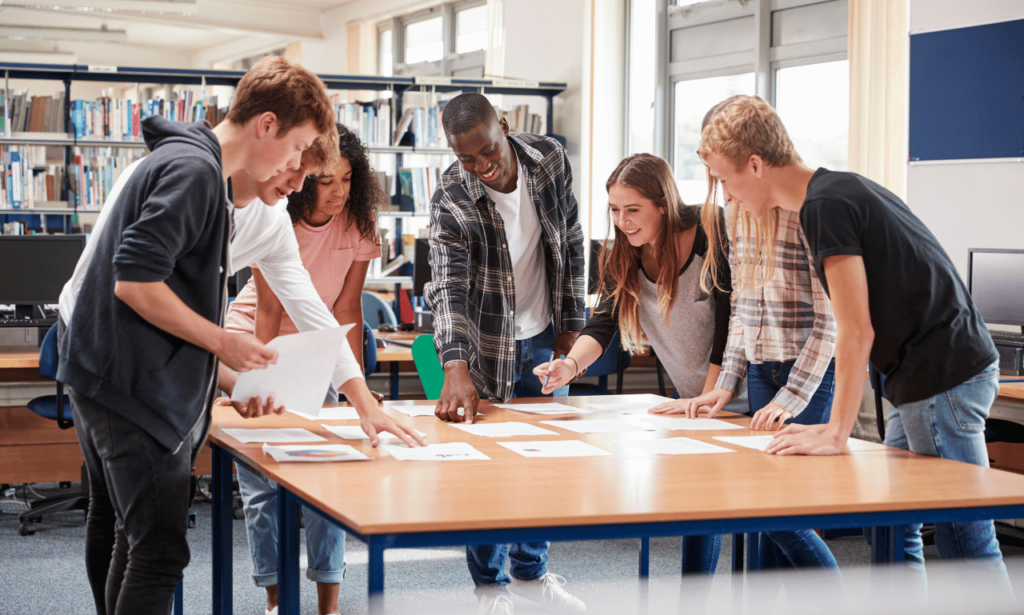
The implementation of project-based learning is not only altering the educational landscape but is also reshaping how students achieve success. By placing student engagement at the forefront, hands-on learning projects orchestrate authentic learning experiences that foster a deeper understanding of complex subject matter. Students are pushed to take ownership of their learning, translating to more substantial project-based learning results.
One of the hallmarks of this innovative approach is its encouragement of critical thinking advancement through the freedom to inquire and investigate. This freedom helps students acquire an enhanced, active participation in their education, forming connections that extend well beyond the confines of traditional learning.
Extended learning experiences facilitated by project-based learning allow students to delve into topics at a pace suited to their individual learning styles, accommodating a diverse range of abilities and interests. The result is often a more personalized and therefore more impactful educational experience.
- The practical application of knowledge through hands-on projects
- Increased accountability in learning, stimulating self-management and organizational skills
- Collaborative efforts among peers, leading to stronger interpersonal and communication abilities
The evidence of project-based learning’s efficacy is not just anecdotal â data gathered from schools across varying demographics show clear trends supporting its effectiveness:
| Metrics of Improvement | Conventional Education | Project-Based Learning |
|---|---|---|
| Retention of Key Concepts | Standard | High |
| Engagement in Classroom Activities | Moderate | Considerably Enhanced |
| Development of Higher-Order Thinking | Basic | Significantly Accelerated |
| Application of Learning Post-Education | Variable | Substantially Applicable |
This shift is not just a fleeting educational fad but a meaningful evolution towards equipping students for the complex challenges and opportunities of the 21st century.
The Crucial Role of Collaborative Project Help in Fostering Teamwork and Communication

In the heart of Project-Based Learning (PBL), cooperation is more than just working together; it’s about harnessing the collective strength of peer-to-peer interaction and the dynamism of teamwork enhancement to foster a collaborative learning environment. Such an approach not only cements knowledge but also nurtures essential leadership skills development, setting the foundation for effective communication and project-based collaboration.
Encouraging Peer-to-Peer Interaction and Leadership Skills
Peak educational experiences often arise from the ability to interact, share, and grow with one’s peers. In a PBL setting, peer-to-peer interaction serves as the catalyst for leadership skills development. This practical engagement propels students to rise to the challenge, guiding their teams with empathy and clarity. As young leaders emerge, they build the confidence to steer project outcomes and invigorate group dynamics with their visionary input.
Effective communication is the lifeline of this process, ensuring that ideas are not only spoken but heard, understood, and acted upon. It is through this communicative prowess that students become adept at navigating the nuances of real-world collaborations and negotiations.
Building a Supportive Environment for Collaborative Learning
Creating a supportive collaborative learning environment is akin to growing a garden of diverse thought – it requires patience, nurturing, and the collective efforts of all involved. The result is a rich tapestry of ideas, solutions, and innovations borne from the depths of team synergy.
Collaborative learning environments thrive on the diversity of student contributions. This inclusivity paves the way for project-based collaboration, where every participant has a stake in the outcome, fostering a strong sense of responsibility and joint accountability.
A concrete measure of the effectiveness of teamwork can be seen through the following table, which contrasts individualistic and collaborative project attributes:
| Aspect | Individualistic Approach | Collaborative Approach |
|---|---|---|
| Problem-Solving | Limited to personal knowledge | Diverse perspectives for holistic solutions |
| Engagement | Varies by individual motivation | Heightened by group dynamics |
| Outcome | Reflective of a single vision | Composite of shared insights and creativity |
| Skills Development | Self-reliant learning | Leadership, negotiation, and teamwork enhancement |
In summary, the transformation from solitary effort to collective endeavor marks the evolution of the PBL experience. It is through the amalgamation of peer-to-peer dialogue, leadership fortification, and a nurturing collaborative learning environment that PBL becomes more than an educational methodâit becomes a crucible for the real-world success of tomorrow’s leaders.
Choosing the Right Project-Based Curriculum Support for Your Classroom
Embarking on the journey of Project-Based Learning (PBL) requires not just a shift in pedagogy, but also a deliberate selection of impactful project-based curriculum support. As educators pivot towards this dynamic, hands-on approach to teaching, seamlessly weaving technology integration into the fabric of their instruction becomes a vital consideration. The adoption of digital PBL resources is not simply about being current; it is about enriching learning experiences and widening the horizons of students to encompass a globally connected world.
Integrating Technology and Digital Resources
Today’s classrooms are increasingly digital, compelling educators to employ technology integration strategies that foster an immersive PBL environment. From virtual reality trips to online collaboration platforms, digital resources can bring abstract concepts to life, making learning resonate with students in profound ways. This integration also prepares students for the technological fluency they will need in the workforce, thus ensuring effective PBL implementation that extends beyond the school years and into future success.
Professional Development and Teacher Training for PBL
Behind every thriving Project-Based Learning initiative is a cadre of well-informed and inspired educators. Investing in teacher training and professional development is essential to the growth of PBL in any learning establishment. Such programs offer educators the skillset to design challenging and meaningful projects tailored to the needs and interests of their students. Continuous professional learning empowers teachers to lead their classrooms with confidence and encourages a culture of collaborative, innovative educationâa hallmark of effective PBL implementation.
FAQ
What is Project-Based Learning and how does it facilitate student success?
Project-Based Learning (PBL) is an instructional methodology that enables students to learn by actively engaging in real-world and personally meaningful projects. It emphasizes hands-on learning projects, collaborative skills, and independent learning, thereby preparing students for real-world success. PBL supports the development of critical thinking, problem-solving abilities, and fosters the application of knowledge in various contexts.
Why is embracing Project-Based Learning essential in today’s educational landscape?
Embracing PBL is crucial due to its ability to equip students with 21st-century skills essential for workforce preparation. This engaging education model promotes socio-cultural learning, ensures students are actively involved in their education, and builds critical collaborative skills needed in today’s interconnected world.
How can educators align projects with curricular objectives in PBL?
Educators can align projects by identifying key learning objectives within the curriculum and designing projects that enhance these goals. This involves integrating inquiry-based learning experiences that allow students to explore real-world problems, thus complementing and reinforcing their academic learning.
How can assessment tools be utilized to monitor and enhance student success in PBL?
Assessment tools in PBL provide both educators and students with feedback on project progress and learning outcomes. They help in setting clear expectations, facilitating regular check-ins, and encouraging reflection. This ongoing evaluation supports experiential learning and allows for adjustments to be made to project approaches for better results.
What transformative effects do hands-on learning projects have on student achievement?
Hands-on learning projects lead to a deeper understanding of content and sharpen critical thinking skills. They heighten student engagement by providing authentic learning experiences that go beyond traditional lecture-based methods. This type of extended learning encourages students to apply knowledge in new contexts, resulting in improved retention and a stronger grasp of the subject matter.
How does collaborative project help strengthen teamwork and communication skills?
Collaborative project help allows students to work together, harnessing their collective strengths to achieve a common goal. This process enhances peer-to-peer interaction, nurtures leadership abilities, and develops effective communication skills. Such collaboration is pivotal in creating a supportive learning environment where students can nurture their interpersonal and problem-solving skills.
Why is selecting the right project-based curriculum support critical?
Choosing the right project-based curriculum support is vital for the successful implementation of PBL. Effective curriculum support includes technology integration, access to digital PBL resources, and entails comprehensive teacher training and professional development. These elements are imperative to ensure educators have the necessary skills and tools to facilitate engaging and educational projects that align with learning objectives.
Can PBL be integrated into existing curriculums?
Yes, PBL can be integrated into existing curriculums by identifying core standards and objectives and crafting projects that explore these areas through practical application. This can be done across various subjects, allowing interdisciplinary connections and a more cohesive learning experience.
How does PBL prepare students for the workforce?
PBL prepares students for the workforce by developing essential skills such as collaboration, communication, critical thinking, and problem-solving. It encourages students to take initiative, manage projects, work in teams, and adapt to changing situations â all highly valued competencies in the professional world.
What role does technology play in Project-Based Learning?
Technology plays a significant role in PBL by providing tools and resources that enhance learning. It facilitates research, collaboration, and presentation of projects, and connects students with a global audience. Utilizing technology also helps in simulating real-world tools and scenarios that students may encounter in their future careers.

